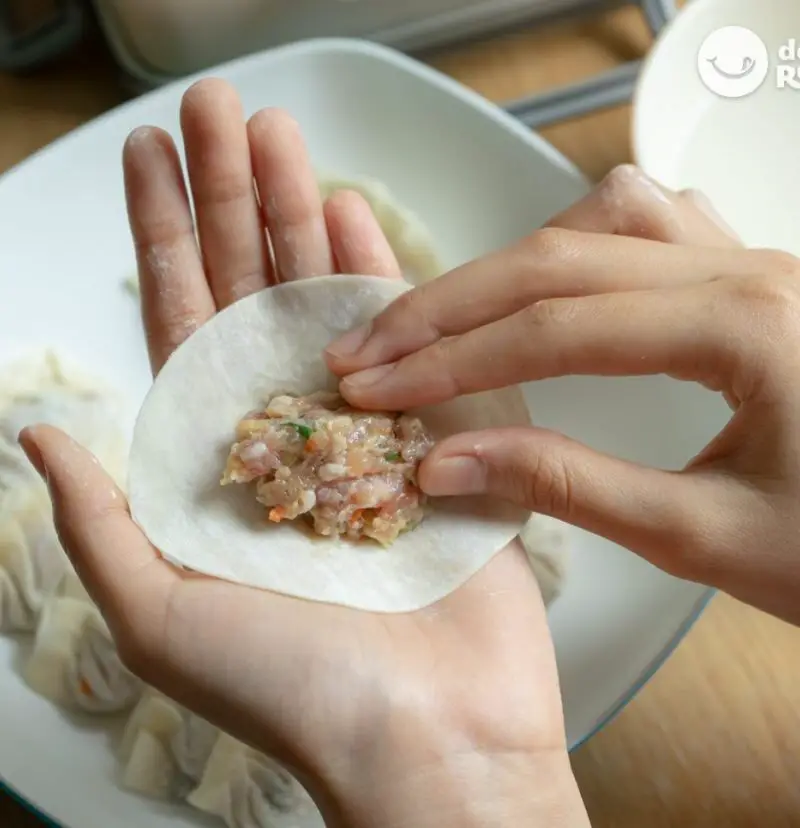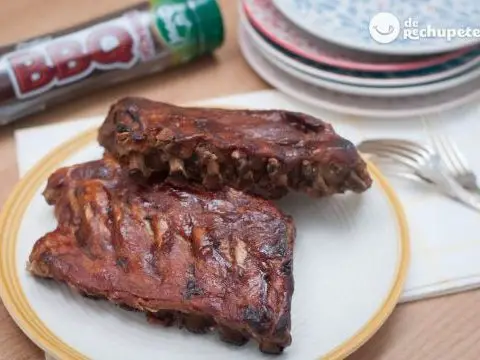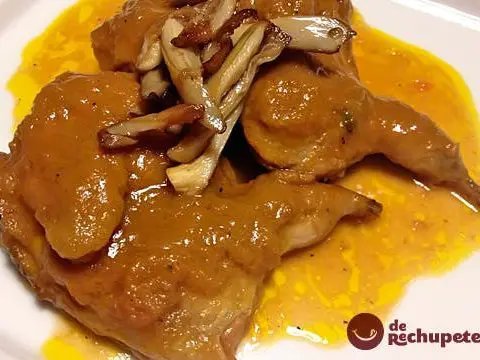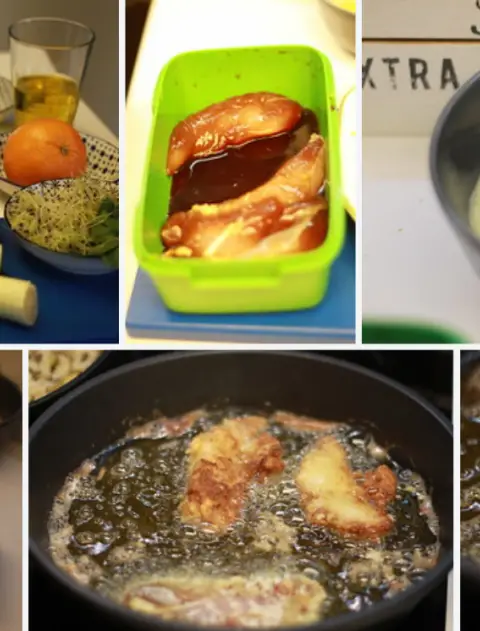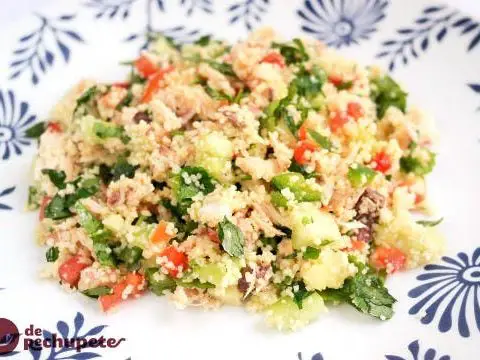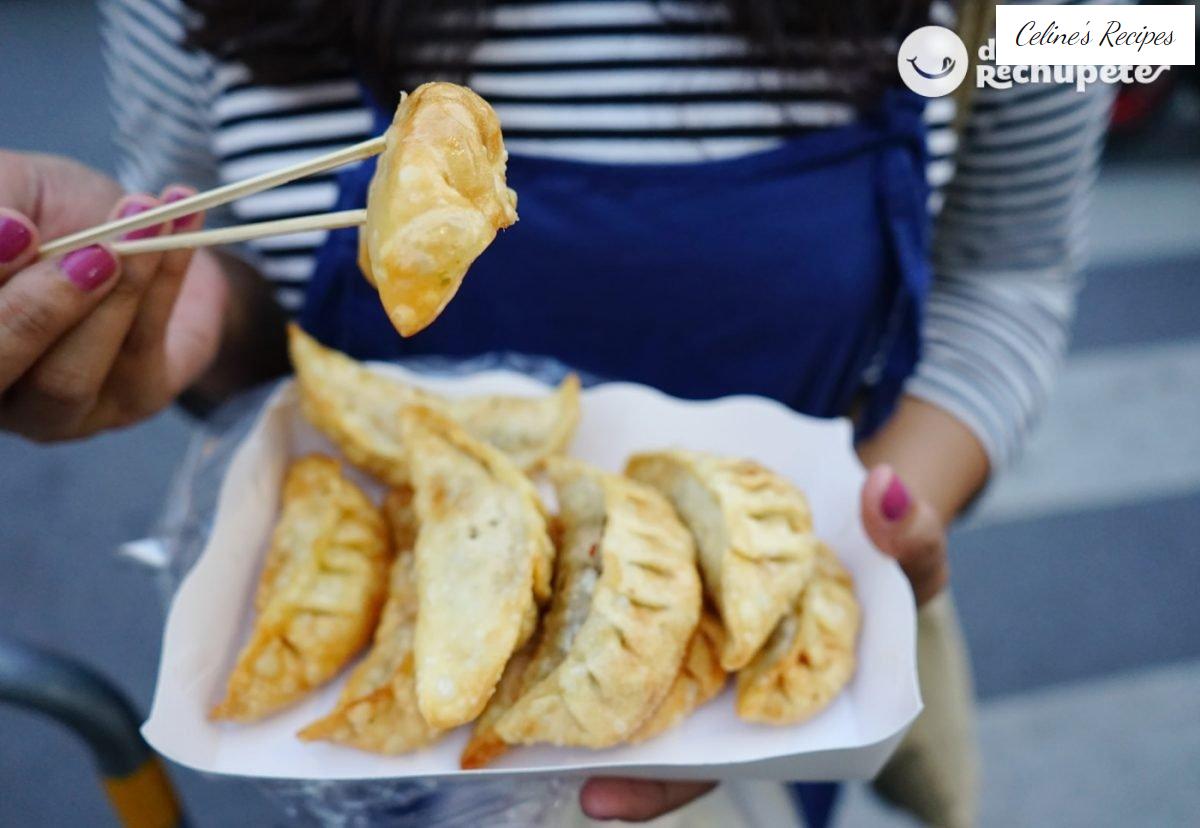
For 6
€ 2.3 /pers.
186 kcal/100g
Ingredients
- 1 package of gyoza wafers
- 3 leaves of bok choy or cabbage
- 1 cube of fresh grated ginger
- 1 teaspoon sesame oil
- Salt and freshly ground black pepper (to taste)
- 300g. minced pork
- 2 chives
- 1 clove of garlic, minced
- 1 teaspoon sake (optional)
- 1 tablespoon soy sauce
- 50g. shiitake mushrooms
Gyozas or fried Japanese dumplings are already as popular and present in the West as ramen itself . We can find them in specialized stores, and in all Asian food restaurants.
Right now we can even find it in many restaurants whose specialty is not Asian, but that have adopted these Japanese delicacies among their appetizers or starters. And everyone likes these dumplings.
- What are gyozas?
- Gyoza recipe
- Folding technique
- Gyoza wrappers: homemade or purchased
- The fillings
- How to preserve gyozas
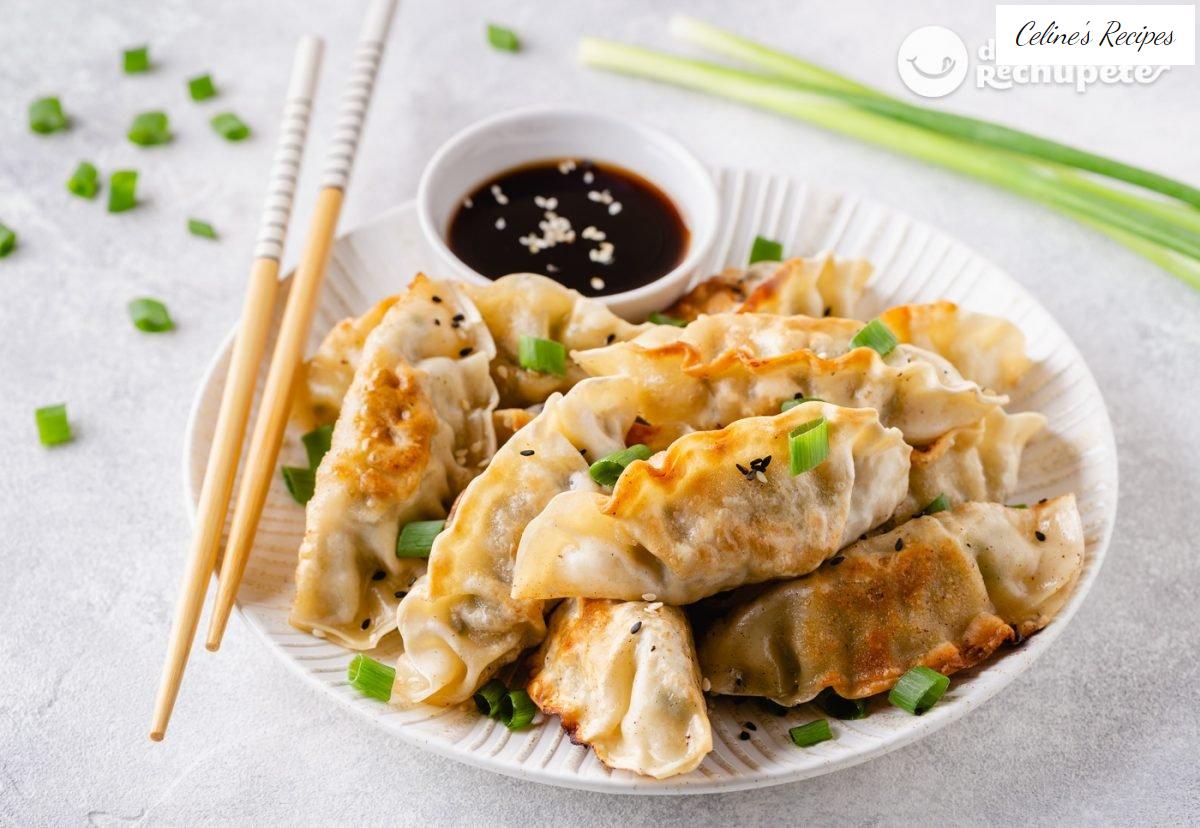
What are gyozas?
These dumplings are actually a loan that Japan took from Chinese cuisine . The original Chinese dumplings are called Jiaozi , they are filled with minced meat and vegetables and wrapped in a thin dough that is sealed by pressing the edges. The finished jiaozi can be boiled, steamed, grilled (also called potstickers), or fried.
Gyoza is similar to a somewhat glutinous dough dumpling that can be eaten fried or steamed filled with meat and steamed vegetables… They are normally eaten with another dish adapted from Chinese cuisine and it is common to accompany them with soy sauce seasoned with vinegar . rice .
How is the Japanese version different?
The main characteristic of gyozas is their cooking method, which consists of frying them in the pan and steaming them . They are first fried in a hot pan until crispy on the bottom and then a little water is added before covering the pan to steam them.
This technique gives the gyozas the best mix of textures, with a crispy bottom and a tender, soft top that envelops the juicy filling inside.
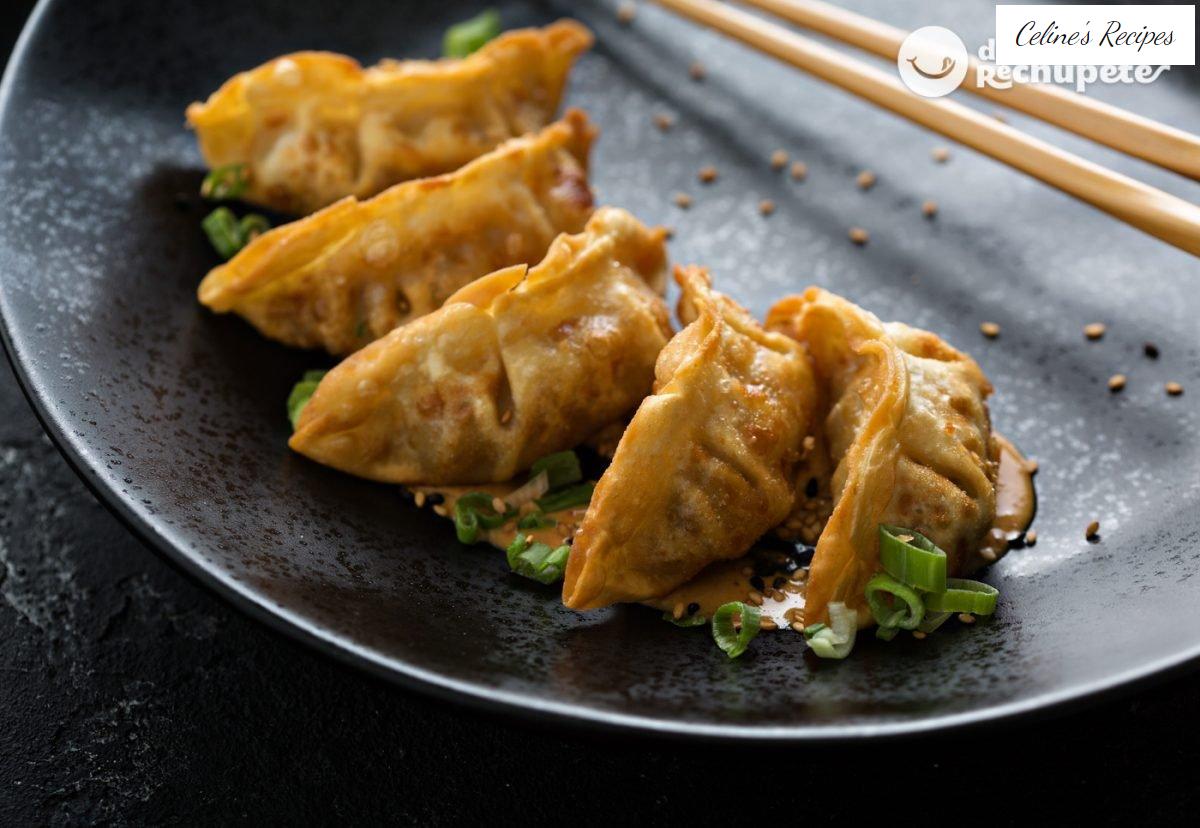
What is the difference between gyozas and Chinese potstickers?
Both gyozas and potstickers are prepared in a similar way, with a combination of frying and steaming, so they are not too different. One of the distinctive differences is that gyozas typically have a smaller size and thinner skin .
With a thinner skin, gyozas have a much crispier texture and bite. The filling also has a finer texture. Although this distinction today with the extension that there has been of these dishes is practically impossible.
Gyoza recipe step by step
Stuffing and folding the empanadas
- We soften the cabbage leaves by putting them in the microwave for 2-3 minutes. We discard the thick trunk of the cabbage and chop the leaves into very small pieces.
- We also chop the chives and shiitake mushrooms into small pieces and mix everything with the minced meat in a large bowl. Add the minced garlic, grated ginger and seasonings to the bowl and mix and knead the mixture by hand until it turns pale in color and is sticky.
- We take a wrapper and place it in the palm of the non-dominant hand. We use a spoon to take a small amount of filling and put it in the center of the wrapper. Dip a finger into a bowl of water and draw a circle around the outer 6mm of the wrapper with the wet finger until it’s wet all over.
- We fold the wrapper in half over the filling and pinch it in the center with our fingers, but without sealing it yet.
- Using the thumb and index fingers of the dominant hand, we begin to make a fold approximately every 6mm on the top of the wrapper from the center to the right side, making 3-4 folds, pressing each fold against the back of the wrapper with the thumb and index fingers of the non-dominant hand to seal it well.
- We do the same process with the left side of the gyoza, making 3-4 folds with the left hand, starting in the center and moving to the left side.



Cooked gyozas
- In a non-stick frying pan, heat extra virgin olive oil over medium heat. When the pan is hot, place the gyozas flat side down and cook until the bottom of the gyoza turns golden brown, about 3 minutes.
- Add a cup of water to the pan and immediately cover with a lid, this way they will steam until most of the water evaporates. After 5 minutes we remove the lid so that the remaining water can evaporate.
- Drizzle a teaspoon of sesame oil around the gyozas in the pan and let them cook uncovered until the gyozas are golden brown and crispy on the bottom. And we would have the gyozas ready, just waiting to accompany them with a delicious sauce. In our case we mix the soy sauce, rice vinegar and a little sesame oil. We serve on a plate and serve them with that sauce or another of your choice.


Accompany these empanadas with a very cold beer and a salad, you will have a delicious and perfect dinner to enjoy alone or with the family.
You can see all the photos of this recipe step by step in this album. Don’t miss any details and you will get some delicious gyozas.
Gyoza folding technique
What usually scares us the most when making our own gyozas is the folding step. We can do it in several ways, but the simplest if we are beginners is the half-moon, which consists of folding the dumpling in half once filled and with the edges moistened and forming three folds from the corner to the center, pressing each fold to close the wafer well.


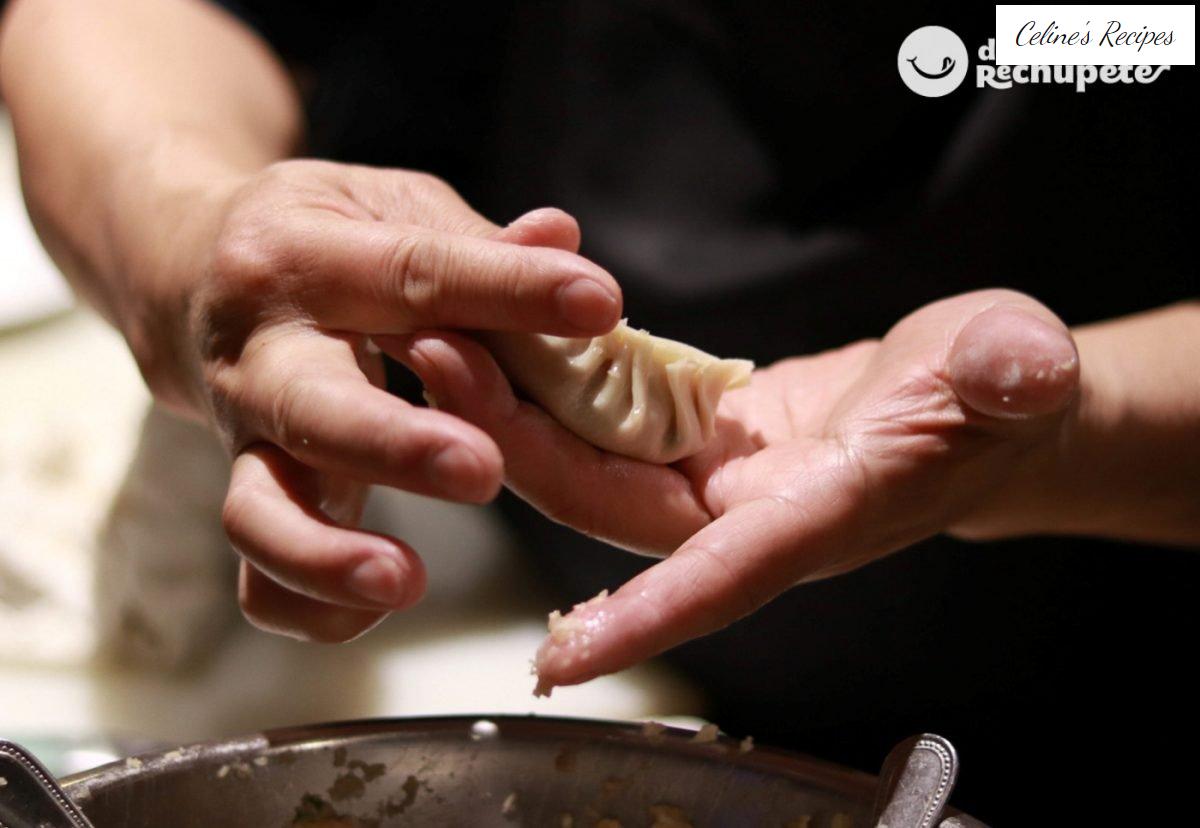
Gyoza wrappers: homemade or purchased
We can make the wrappers ourselves at home , as the Japanese have traditionally done. But we have more and more Asian food stores in all our neighborhoods and cities , where we can more comfortably find ready-made gyoza wafers. If we do not have these stores near us, making the wrappers is not complicated either.
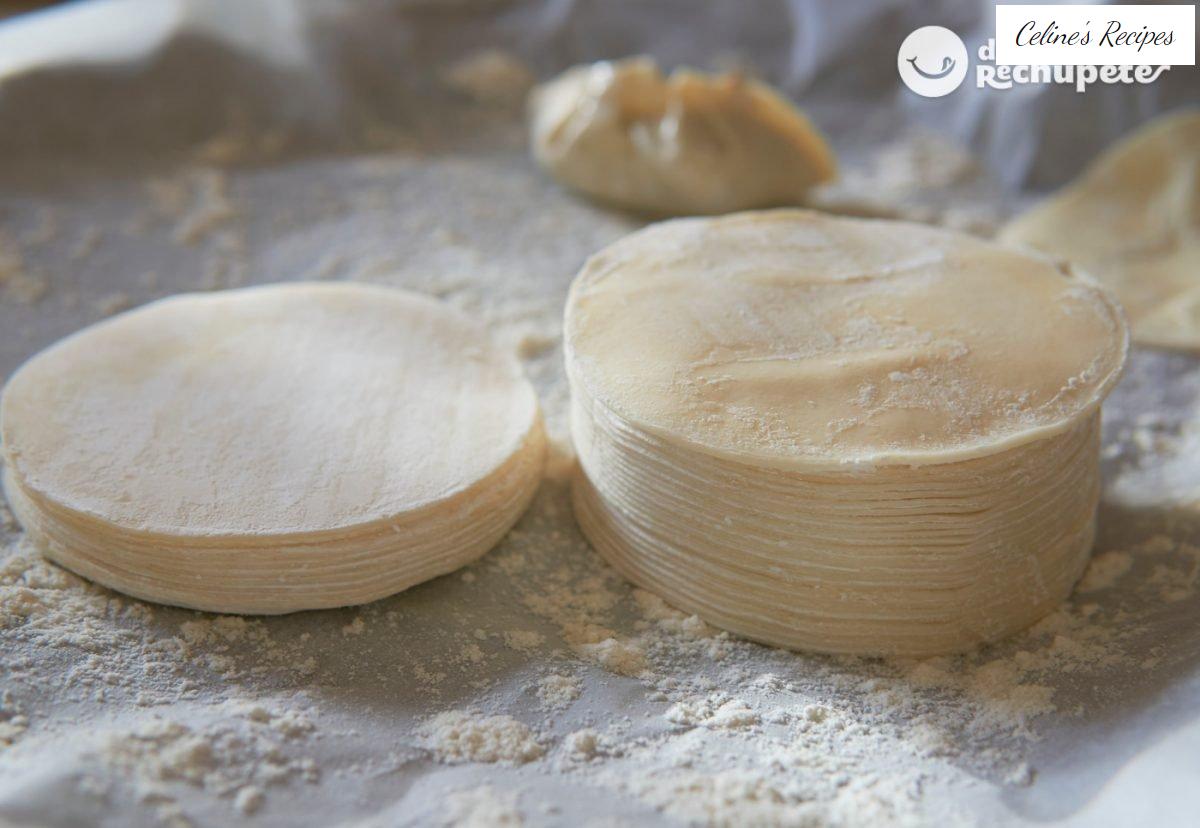
The gyoza fillings
Actually we can fill them with whatever we want, but in traditional gyozas there are ingredients that are not missing:
- Pork : Although original Chinese dumplings are filled with minced beef, pork, lamb, chicken, fish and shrimp, classic gyozas usually contain minced pork.
- Cabbage : As cabbage leaves are thick and tough, different methods are used to soften them. Some blanch them or microwave them for a minute or two. Some sprinkle salt to dehydrate the cabbage and squeeze out the water before mixing it with the meat.
- Chinese chives .
- Aromatics : garlic is commonly used in Japanese gyozas and grated ginger is often used.
- Seasonings : the seasonings are simple, with just sake, soy sauce, sesame oil and a pinch of salt and pepper we will be able to enjoy a great flavor, as well as the freshness of the main ingredients.

The truth is that there is a lot of room for creativity when it comes to preparing gyozas. We can version them with our favorite vegetables or meats, or even make them in their vegetarian version, with tofu or shiitake mushrooms that give them a meaty texture and juicy umami flavor . The only general rule is to consider ingredients with different textures.
How to preserve them
The normal thing when we make gyozas at home is that we get a large quantity, much more than what we are going to eat at the moment. This is great because they can be frozen perfectly and the next time we want to eat gyozas it will only take 10 minutes to have our dish ready.
We will freeze them on a tray separated from each other so that they do not stick to each other once we have formed and closed the dumplings, in the step prior to cooking them. And when they have frozen, we can stack them in a tupperware or freezer bag.
